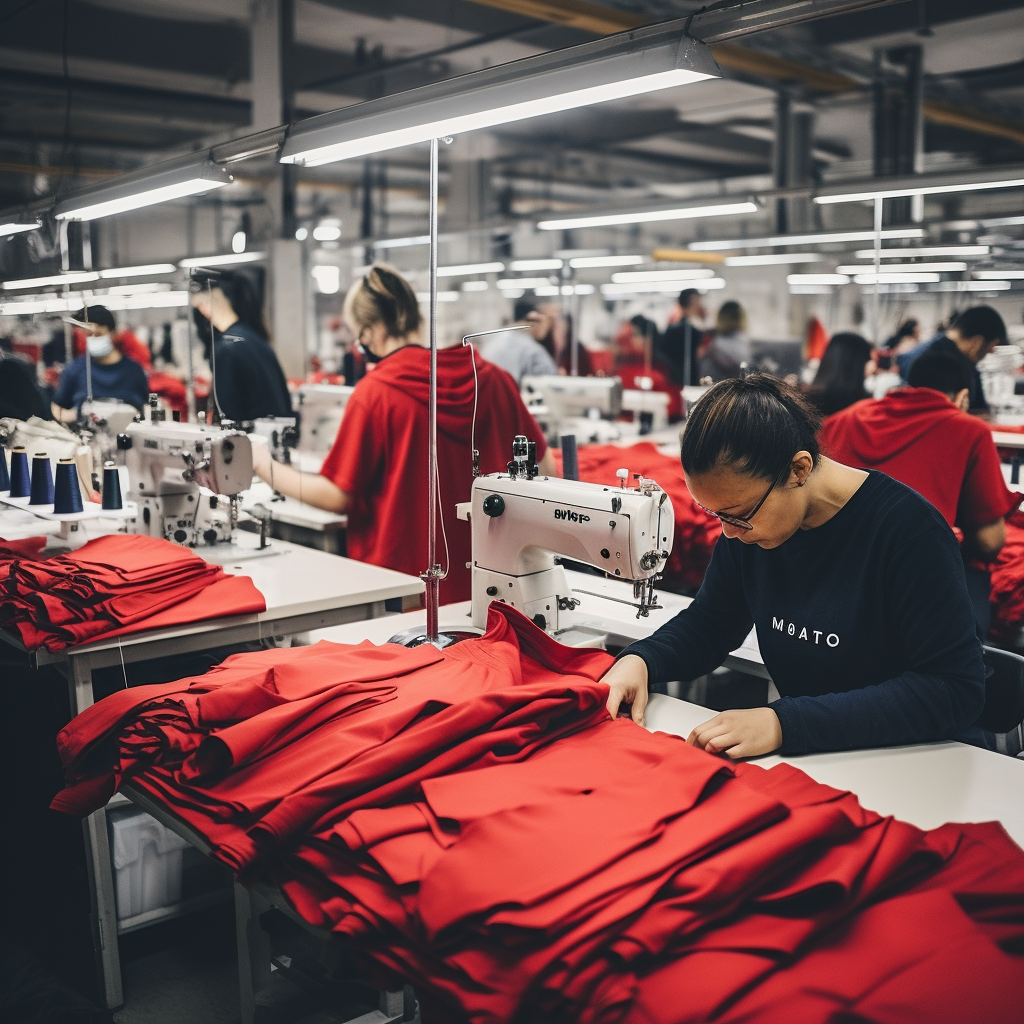Mastering the Bill of Materials: A Comprehensive Guide for the Apparel Industry


The apparel industry, with its complex supply chains and a multitude of components, heavily relies on the accuracy and efficiency of the Bill of Materials (BOM). Essentially, the BOM is a comprehensive list of raw materials, components, and assemblies required to construct, maintain, or repair a product. In the context of the apparel industry, this could include everything from fabric and thread to buttons and labels.
The BOM not only outlines what is needed but also provides specific details such as dimensions, descriptions, quantities, and sometimes, even the supplier information. It's a critical tool for production planning, cost estimation, and inventory control—three pillars of successful apparel manufacturing.
Yet, the importance of a well-structured and detailed BOM is often underestimated. Misunderstandings or inaccuracies in the BOM can lead to production delays, increased costs, and missed deadlines, which can significantly impact a company's bottom line and reputation in the market.
As such, this guide aims to shed light on the importance and intricacies of a Bill of Materials in the apparel industry. We'll explore the basics, its components, and best practices for creating an efficient BOM. We'll also delve into the role of technology in managing the BOM and discuss some of the challenges companies face in implementing and managing it.
Whether you're a seasoned professional in the apparel industry or a novice seeking to understand the nitty-gritty of product development and production management, this guide will provide you with a comprehensive understanding of the Bill of Materials in the apparel industry.
Stay tuned as we unravel the significance, components, and best practices of a Bill of Materials, the unsung hero of the apparel industry.
Understanding the Basics of a Bill of Materials
A Bill of Materials (BOM) is like a recipe for manufacturing a product. It lists every material, component, and instruction necessary to create the final product. It's a vital document employed across various industries, but in the apparel industry, it's particularly crucial due to the intricate nature of garments.
Think of a simple white t-shirt. It may seem uncomplicated, but when you consider the components needed—cotton fabric, thread, neck label, hang-tag, packaging, and more—it's clear that even the simplest garment has a complex structure behind it. The BOM provides a clear, detailed, and structured list of all these required elements, making it an indispensable tool for any apparel manufacturer.
The BOM is not a static document. It evolves throughout the lifecycle of a product, from inception through design and production. An initial BOM might include a list of raw materials alongside estimated quantities. As the product moves through the design process, the BOM becomes more detailed, with precise measurements, color specifications, supplier details, and assembly instructions. By the time production begins, the BOM is a comprehensive guide to creating the final product.
Understanding the structure and purpose of a BOM is the first step in managing it effectively. The more detailed and accurate your BOM, the smoother your production process will be.
Importance of a Bill of Materials in the Apparel Industry
In the apparel industry, the Bill of Materials (BOM) carries significant importance due to several factors.
Efficient Production Planning: An accurate BOM ensures that all necessary components are available when needed, which helps to prevent production delays. It also allows manufacturers to make forecasts about production times and costs, leading to more accurate delivery dates and pricing information for customers.
Inventory Management: A BOM provides a clear picture of the quantity of raw materials needed for production. This helps in maintaining optimal inventory levels and avoiding stockouts or overstocking, both of which can be costly.
Cost Estimation: By detailing the quantity and cost of each component, a BOM allows for more accurate cost estimation. This helps in pricing the final product and identifying areas where cost savings might be possible.
Quality Control: A well-structured BOM includes detailed specifications for each component, aiding in quality control. By specifying the exact type of material, color, size, and other details, a BOM ensures that the final product meets the desired quality standards.
Communication: The BOM serves as a common language between different departments within a company and between the company and its suppliers. It ensures everyone involved in the production process has the same understanding of what's required, reducing the likelihood of mistakes or misunderstandings.
Given these benefits, it's clear that a well-managed BOM is not just a nice-to-have but a must-have for any apparel manufacturer aiming for efficiency, cost-effectiveness, and high quality in their production processes.
Components of a Bill of Materials in the Apparel Industry
A Bill of Materials (BOM) in the apparel industry typically consists of several vital components.
Raw Materials: This includes the primary fabric(s), lining, interfacing, and any other materials used in the construction of the garment. Each material's type, color, and weight should be specified, and quantities should be calculated based on the garment's size and cut.
Trims: Trims are all the additional items used to finish a garment. They can include buttons, zippers, lace, ribbons, and embroidery. The BOM should specify the type, color, size, and quantity of each trim.
Labels and Packaging: This includes brand labels, size and care labels, hangtags, polybags, hangers, and any other packaging materials. Each of these should be detailed in the BOM with its specifications and quantities.
Labor and Operations: While not physical components, the labor and operations involved in manufacturing the garment are also part of the BOM. This includes cutting, sewing, finishing, pressing, and packaging. Each operation should be listed with its estimated time and cost.
Suppliers: For each component, it's useful to include details of the supplier, including their contact information and lead times. This ensures that all necessary information is in one place, making it easier to manage procurement.
Notes and Instructions: Finally, the BOM can include any additional notes or instructions that are necessary for the production of the garment. This might include special sewing techniques, assembly instructions, or any other details that are crucial for the production process.
In sum, a comprehensive BOM in the apparel industry is a detailed document that leaves no aspect of the garment's production to chance.
Creating an Efficient Bill of Materials: Best Practices
Crafting an efficient and effective Bill of Materials (BOM) requires careful planning and detail-oriented work. Here are some best practices to guide the process:
Start Early: Begin the BOM during the design phase of the garment. This allows for early identification of required materials and components, aiding in efficient procurement and inventory management.
Be Detailed: Include as much detail as possible for each component. This leaves no room for ambiguity and ensures everyone involved in the production process understands exactly what's required.
Keep it Dynamic: Update the BOM throughout the garment's lifecycle. Changes in design, material availability, or supplier details should be reflected in the BOM to keep it current and accurate.
Standardize: Use a standard format for your BOMs. This makes it easier for everyone involved in the production process, from design to procurement to manufacturing, to read and understand the BOM.
Collaborate: Involve all relevant departments in the creation and updating of the BOM. This promotes a more comprehensive and accurate BOM and ensures everyone is on the same page.
Use Technology: Leverage BOM management software to make the process more efficient. These tools can automate many aspects of BOM management, from updating quantities to tracking changes.
By following these best practices, you can ensure your BOM is a robust tool that contributes to efficient and effective production in the apparel industry.
The Role of Technology in Managing the Bill of Materials
As with many other industries, technology plays a significant role in managing the Bill of Materials (BOM) in the apparel industry.
BOM Management Software: There are numerous software solutions available that can greatly simplify the process of creating and managing a BOM. These tools can automate various aspects of BOM management, including updating quantities based on changes in design or size, tracking changes and maintaining version control, and integrating with other systems such as inventory management and procurement.
Integration with ERP Systems: BOM management software can often be integrated with an Enterprise Resource Planning (ERP) system. This allows for real-time updates to inventory based on the BOM, more accurate cost and time projections, and improved overall resource management.
Collaboration Tools: Cloud-based BOM management tools allow for better collaboration among team members. Everyone involved in the production process, from designers to manufacturers to suppliers, can have access to the same up-to-date BOM, reducing the chance of errors or misunderstandings.
AI and Machine Learning: Advanced BOM management tools may also incorporate artificial intelligence and machine learning to predict future needs based on historical data, identify potential cost savings, and even suggest design changes to improve efficiency or reduce costs.
Leveraging technology in BOM management not only improves efficiency and accuracy but can also provide valuable insights to aid in decision-making. It's no longer just a nice-to-have in the apparel industry but a necessity for staying competitive in the modern marketplace.
Challenges in Implementing and Managing the Bill of Materials
Implementing and managing an effective Bill of Materials (BOM) is not without its challenges. These can include:
Complexity: The sheer number of components and their variations in a garment can make the BOM very complex. Multiple sizes, colors, and design variations can all add to the complexity, making the BOM difficult to manage.
Changes in Designs: The fashion industry is known for its fast pace and frequent design changes. These changes need to be reflected in the BOM, which can be a complex and time-consuming process, especially without the aid of BOM management software.
Supplier Management: Managing multiple suppliers, each with their lead times, prices, and availability, can be a challenge. Any changes or inconsistencies need to be updated in the BOM to ensure accuracy.
Integration with Other Systems: Integrating the BOM with other systems such as inventory management, procurement, and ERP can be complex, especially if these systems are not designed to work together seamlessly.
Training and Adoption: Implementing a new BOM management system or process often involves training staff and dealing with resistance to change. Ensuring everyone understands and uses the BOM correctly can be a significant challenge.
Despite these challenges, the benefits of an effective BOM far outweigh the difficulties. With careful planning, the use of technology, and ongoing training and support, these challenges can be successfully overcome.
Overcoming Challenges in Bill of Materials Management
Overcoming the challenges associated with managing a Bill of Materials (BOM) requires a combination of strategic planning, effective communication, and the right use of technology.
Strategic Planning: A well-thought-out plan can help manage the complexity of a BOM. This involves starting the BOM creation early in the design phase, keeping it updated through all stages of production, and standardizing the format to make it user-friendly.
Effective Communication: Regular communication among all stakeholders can help manage design changes and supplier issues. Clear, open channels of communication can ensure everyone is on the same page and reduce misunderstandings.
Leveraging Technology: Technology can greatly simplify BOM management. BOM management software can handle complex tasks such as updating quantities and tracking changes. Integration with ERP systems can improve inventory management, and AI can provide predictive insights to aid decision-making.
Training and Support: Implementing a new BOM management system requires adequate training and ongoing support. This ensures all employees understand the system and can use it effectively, leading to better adoption and fewer errors.
Implementing these strategies can help overcome the challenges associated with BOM management, leading to a smoother, more efficient production process in the apparel industry.





-500x500.jpg)
-500x500.jpg)
-500x500.jpg)
-500x500.jpg)
-500x500.jpg)